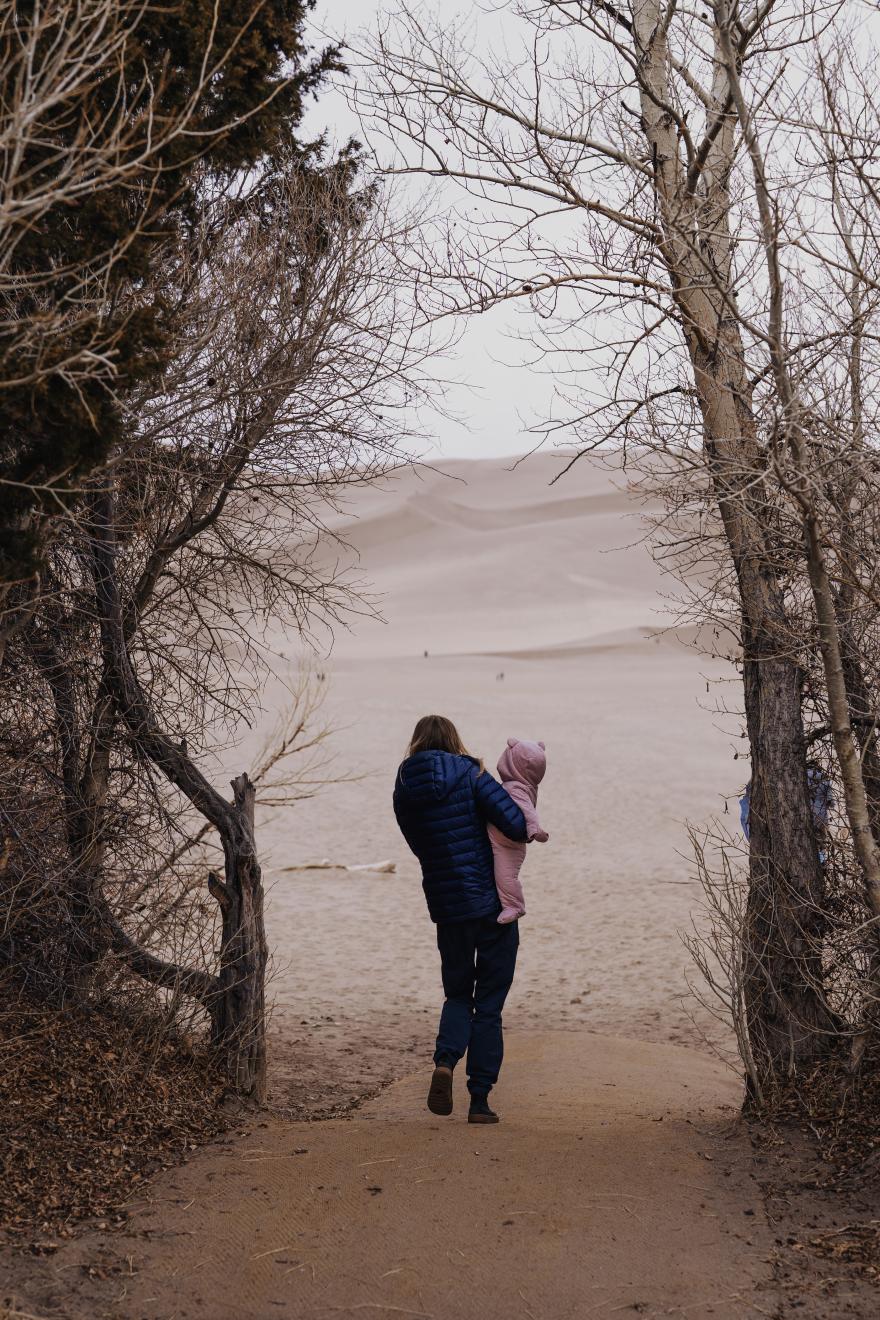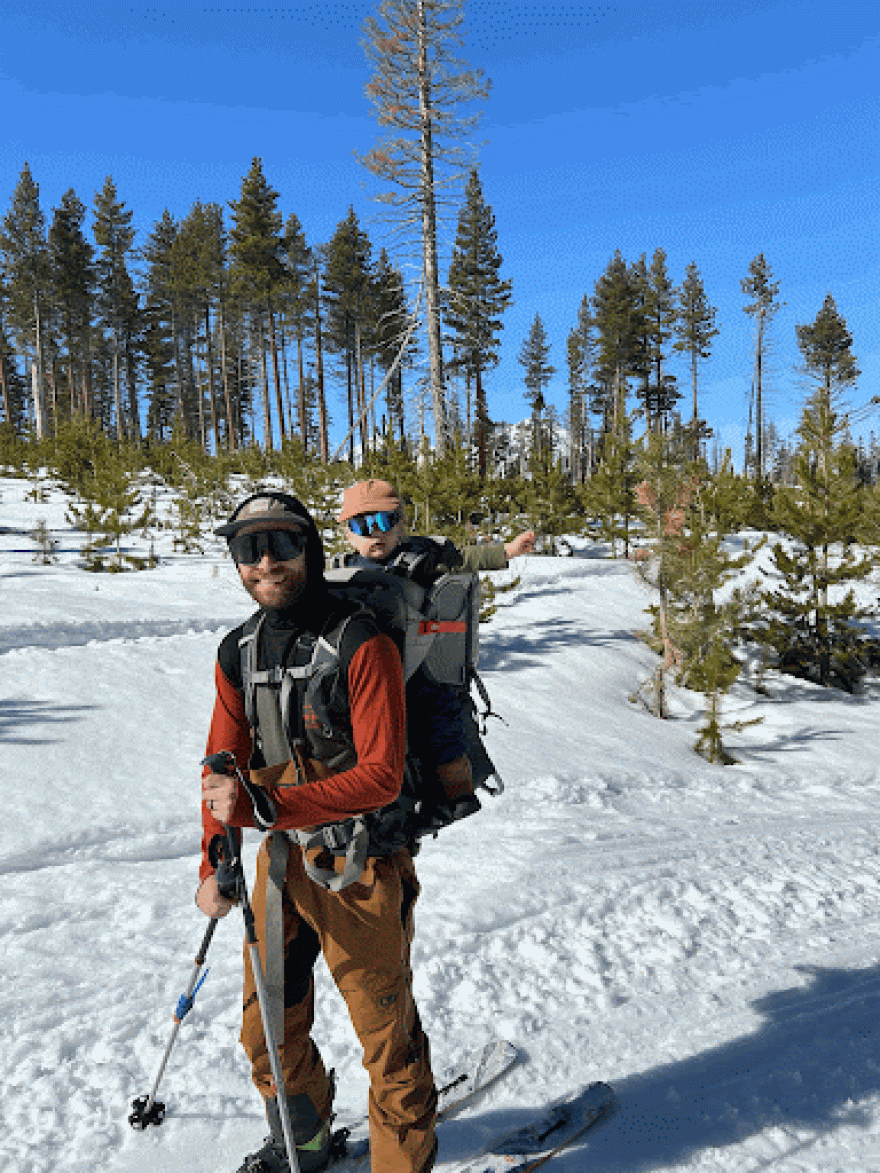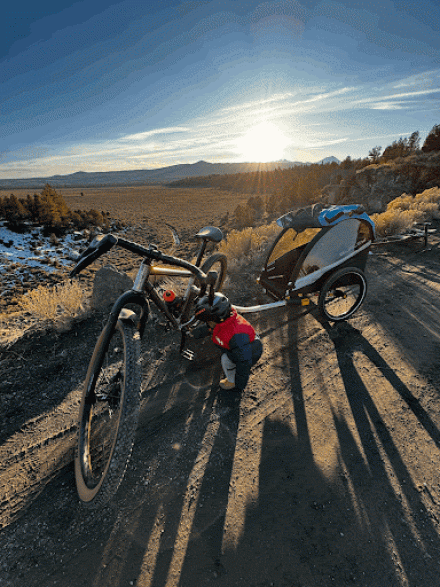By Brian Puccerella
This article is part of our Generation Wild Coalition Storytelling series to give you an inside look at the work being done on the ground in Generation Wild communities--straight from the perspectives of the rockstars involved.
Brian Puccerella is the San Luis Valley Generation Wild Coordinator at SLVGO!, an outdoor educator, and owner of Blue Spruce Outdoor School where he teaches Whitewater Rescue, Kayaking, mountain biking, and Avalanche Education courses. Disclaimer: Brian is not a pediatrician or gear designer. To ensure safety, please consult your pediatrician and outdoor equipment manuals before attempting these suggestions.
---
My name is Brian Puccerella and I’m a father and full-time outdoor educator getting kids outside through GOCO’s Generation Wild program. Colorado is famous for its outdoor lifestyle, which can seem out of reach after having your first baby. But having a child doesn’t have to mean giving it all up. It means new and exciting challenges, like introducing outdoor activities in a safe and age-appropriate way. Doing so can lead to many wonderful experiences outdoors with your family.
0 - 6 Months
Caring for a newborn isn’t easy. So first, try to relax and take care of the baby (and mother), while adapting to your new lifestyle. When you feel it’s time to start ramping up activities again, give yourself lots of flexibility and be cautious when introducing your newborn to the outdoors. The good news is newborns love being outside! Spending time outdoors is great for their development and health. It may seem obvious, but remember that in the first 6 months, your baby is at their most vulnerable, so take things slowly and follow your intuition.

Hiking
Walking outside is an easy way to get the family out of the house for a while. When hiking with your baby, start small—you won't know your little one's tolerance for being carried until you try it. Begin with short distances (less than a mile) and gradually increase as they become more comfortable. On single-track trails, a baby carrier is preferable to a jogging stroller, as trails often don't provide enough width. Wearing your baby also frees your hands, giving you better stability and balance on uneven terrain. Remember to pack a diaper bag and milk, as babies operate on their own schedules, not yours. Dress your baby appropriately for the weather, typically with one more layer than you're wearing—possibly more if you tend to run warm.
Camping (sort of)
Camping with a baby can be wonderful but comes with some extra considerations. Your main priorities should be keeping your baby warm and ensuring they sleep safely. Instead of using a tent, opt for temperature-stable environments like vans, RVs, trailers, or book an Airbnb near your favorite outdoor spot. Use a portable bassinet to ensure safe sleeping—there are many affordable options available—and always follow safe sleep principles. If you're not ready for overnight camping, consider a picnic as another great option that requires less preparation. You can take your stroller to the park, for example, and easily return home afterward.
Rafting
If you love river recreation, it's a great idea to introduce your child to it at a young age so they develop comfort with water activities. Be prepared by getting a personal flotation device (PFD) in their size, bringing sun protection (both sunscreen and protective clothing), and packing anything else needed for a day outside. Let your child play in an empty raft first to become familiar with it. If you're experienced and comfortable on the water, try paddling some local class I or II sections with your little one. Remember that this is a team activity—one person will need to manage the baby while another rows. Starting swim lessons early is also highly recommended to build water confidence and safety skills.
6-12 months
At this point, babies have a stronger neck and better head control, opening up some fun options.

Walking with a stroller
At this age, you can introduce the ‘jogger’ (running stroller), which was a game changer for my family. You can’t actually ‘jog’ until they reach 12 months (per manufacturer instructions), but it makes walking outdoors easier, too. Any trail that is paved, hardpack, or wheelchair-accessible will work.
Cross-country ski trailer
I admit, this one is pretty niche and pricey. But it’s a fun option for winter! There are two leading bike trailer brands: Burley and Thule. Both convert into a winter-ready cross-country skiing trailer that you can use to pull your little one around in the snow. It’ll also work with snowshoes, backcountry skis, and split boards, but groomed trails are recommended. Keep speeds slow to avoid any falls.
Tent camping
At this age, babies are no longer swaddled, and they might be sleeping in sleep sacks, which are basically sleeping bags! Pair with some warm pajamas capable of regulating colder temperatures. This opens up tent camping. It’s harder to find stable overnight temperatures at high elevations. I recommend sticking to warmer months and lower elevations.
12 months - 3 years
Outdoor experiences during these years can help prepare your child for what’s possible at age four and beyond. Learning to walk is a huge step that happens around age one. Shortly after, the options expand greatly.

Balance bikes
Gone are the days of training wheels, and everyone is better off for it. In the last 10 years, ‘balance bikes’ have emerged. They’re tiny bikes with no pedals that allow children to sit on the seat and push themselves with their feet. Balance bikes come in many sizes and varieties, so you may end up with two or three before progressing to a pedal bike.

Bike trailers
At age one, you can pull your child on your bike with a bike trailer (per manufacturer instructions). As a bonus, if you have the cross-country ski trailer mentioned above, you can fat bike in winter while pulling them around.
Skiing and/or snowboarding
The ski community is divided on when children should begin skiing. Some follow the philosophy that "if you can walk, you can ski," though finding appropriately sized equipment for very young children can be challenging. During these early experiences, parents will spend most of their time playing in the snow and managing their child's experience rather than actually skiing. Others argue that very young children gain little from early skiing experiences and might develop bad habits that persist as they grow. Despite these differences, folks generally agree that meaningful ski learning begins around ages 3-4, and it’s the starting age for ski lessons at most Colorado resorts.
Backcountry skiing
I’m hesitant to include this recommendation, so let me be clear: I'm not suggesting chasing powder or finding lines in the backcountry! Instead, I'm specifically referring to the gentle 20-degree slopes found on local hills in ski towns throughout the state—areas that completely avoid avalanche terrain and danger. If you see locals walking their dogs, you're probably in the right spot. These areas offer the best option during the early years and create a win-win situation for everyone. You can place your child in a carrier and enjoy some easy "backcountry" laps, providing great exercise for parents while keeping kids happy. Just remember to stick exclusively to easy, gentle slopes.
4+ years
Congratulations on making it through the toddler years! You're about to unlock all of your favorite outdoor activities with your young one. At this point, kids can start learning skills and progress in various areas. Whatever activity you choose, remember these key principles:

Focus on practicing fundamentals and maintain a fun atmosphere. Avoid making activities competitive. That will come naturally with time!
- Continue managing the basics like hunger, hydration, temperature, tiredness, and emotions.
- Be prepared to adapt to changing weather conditions, as it's your responsibility to adjust to the environment, not the other way around.
- Consider enrolling your child in lessons, as kids often learn better from instructors than from parents—don't take offense, but embrace the opportunity to drop your child at ski school while enjoying some time on your own.
- Finally, shop local and buy used outdoor gear whenever possible, as equipment at this age can be expensive, especially when children outgrow items every season.
This article doesn’t cover everything you can possibly do outside with your child, but it’s a great place to start. Now, get outside and have fun!
